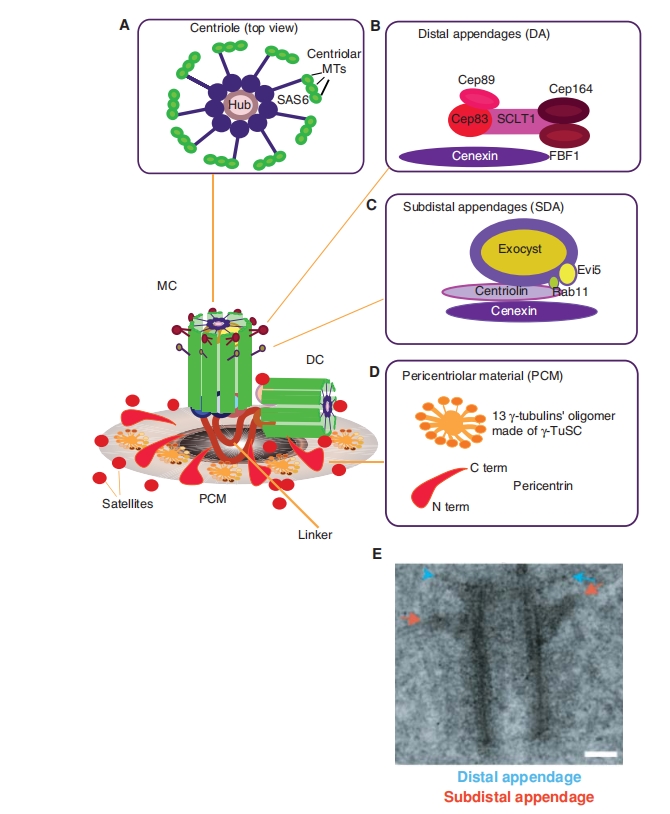Centrosome Isolation and Centrosome Protein Purification Service
The centrosome is the primary microtubule-organizing center (MTOC) of the cell, playing a central role in mitosis, establishment of cell polarity, and dynamic regulation of the cytoskeleton. Therefore, high-quality isolation of centrosomes and their associated proteins is essential for studying their biological functions. This service is based on multiple cell fractionation techniques, combined with optimized buffer systems and purification workflows, enabling efficient and stable isolation of highly pure centrosomal structures and associated proteins from cells or tissues. It provides reliable samples for subsequent proteomics, structural biology, or functional assays.
The centrosome isolation and centrosome protein purification service is widely applied in cell biology, plant science, and disease research. In cell biology, it is used to study the role of the centrosome in cell division and polarity establishment; in plant science, it helps explore the function of microtubule-organizing centers in cytoskeletal remodeling and stress response; in disease research, it can be used to reveal the mechanistic links between centrosomal abnormalities and diseases such as cancer and neurodegenerative disorders. The service provides critical data support for elucidating centrosomal function and regulatory mechanisms across diverse research fields.

Vertii, A. et al. Cold Spring Harbor Perspectives in Biology, 2016.
Figure 1. Centrosome Substructures.
Services at MtoZ Biolabs
Based on efficient isolation and high-resolution mass spectrometry platforms, MtoZ Biolabs offers the centrosome isolation and centrosome protein purification service focusing on centrosome purification and protein analysis. We employ various cell fractionation techniques to extract high-purity centrosomes from cells or tissues, and use optimized buffer systems for protein extraction. Subsequently, the proteins are analyzed qualitatively and quantitatively using mass spectrometry platforms, providing multidimensional data on their composition, abundance, modification states, and more. This service aids in the in-depth study of the critical roles centrosomes play in cellular functions and signal regulation.
Analysis Workflow
1. Sample Preparation
Cells or tissue samples are homogenized to remove impurities, creating ideal conditions for centrosome isolation.
2. Centrosome Isolation
Various centrifugation techniques, including differential and density gradient centrifugation, are used to efficiently enrich structurally intact centrosomes from the sample.
3. Centrosome Purification
Further removal of non-specific components results in a high-purity centrosome fraction, suitable for subsequent protein extraction.
4. Protein Extraction and Purification
An optimized buffer system is used to lyse centrosome structures, extract centrosomal proteins, and perform initial purification, ensuring the quality meets the requirements for further analysis.
Sample Submission Suggestions
1. Sample Types
Suitable for mammalian cells, tissue samples, and other related materials. Sufficient sample quantity is recommended to ensure efficient centrosome extraction and adequate protein content.
2. Sample Preservation and Transport
Samples should be immediately frozen at −80°C after processing and transported with dry ice under a full cold chain to maintain centrosome structural integrity, avoiding freeze-thaw cycles.
3. Sample Processing Instructions
If the sample has undergone cell lysis or partial preprocessing, please provide detailed background information upon submission. This will help optimize the separation strategy and improve the consistency and accuracy of the analysis results.
Service Advantages
1. Efficient Separation
With optimized separation technology, centrosomes can be efficiently isolated from various samples, ensuring structural integrity and suitability for various downstream experiments.
2. Precise Extraction
Centrosome proteins are extracted under gentle and high-fidelity conditions, preserving their native conformation and functional characteristics to ensure the reliability of subsequent applications.
3. Standardized Operating Procedure
Strictly standardized sample processing ensures consistency and reproducibility between batches, meeting both scientific and applied research requirements.
4. Flexible Customization Services
Based on the sample type and experimental objectives, separation and purification parameters are tailored to provide personalized solutions, enhancing experimental efficiency and the applicability of results.
Applications
1. Cell Division Mechanism Research
The centrosome isolation and centrosome protein purification service can be used to investigate the functions and regulatory mechanisms of centrosomes during mitosis and meiosis, revealing the molecular basis of chromosome segregation and cell cycle control.
2. Protein Interaction Network Analysis
Purified centrosomal proteins can be used for interaction studies to construct signal transduction or structural networks associated with the centrosome.
3. Development and Differentiation Research
In studies involving stem cells, neurons, and embryonic cells, the centrosome isolation and centrosome protein purification service supports analysis of the centrosome’s role in cell polarity establishment and spatial positioning.
4. Plant Cell Functional Analysis
Although typical centrosome structures are absent in plants, the service can be applied to isolate pericentriolar region proteins, aiding the study of their roles in cytoskeleton organization and cell division.
FAQ
Q1: Does the Purification of Centrosomal Proteins Affect their Structure or Function?
A1: No. We use gentle extraction methods and low-temperature processing to prevent protein denaturation while preserving their native conformation and functional integrity, making them suitable for downstream structural or interaction studies.
Q2: Can Homogenized Samples Be Submitted Directly?
A2: Yes. If you have already completed partial sample preparation (such as cell homogenization), please provide detailed processing information so we can optimize the subsequent steps accordingly.
Deliverables
1. Comprehensive Experimental Details
2. Materials, Instruments, and Methods
3. Data Analysis, Preprocessing, and Estimation
4. Bioinformatics Analysis
5. Raw Data Files
How to order?







